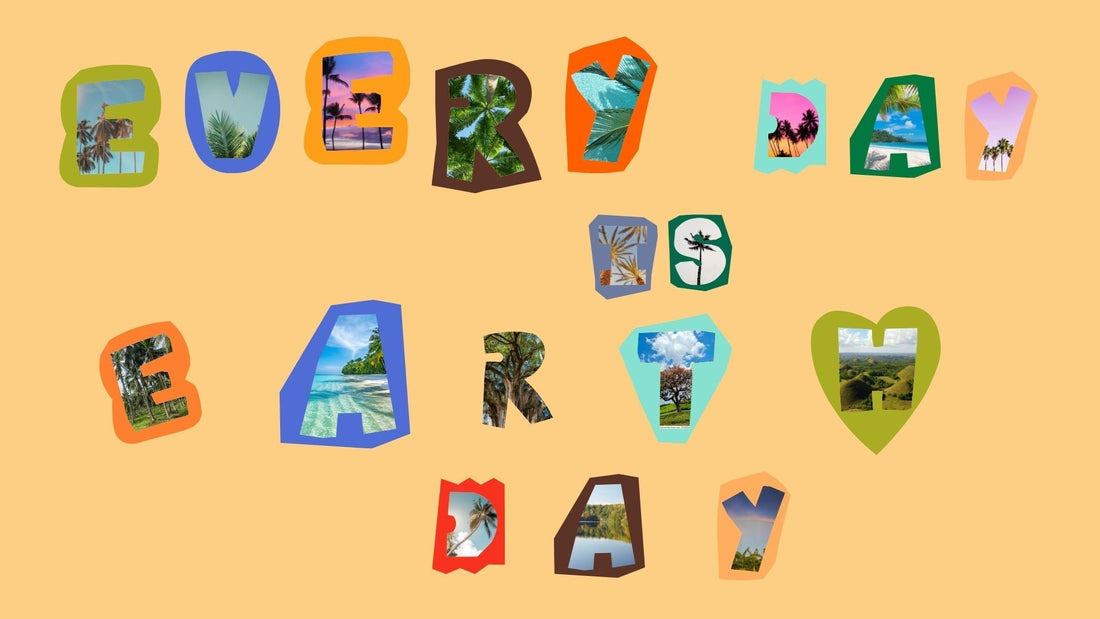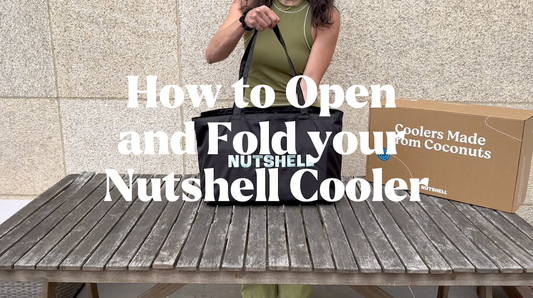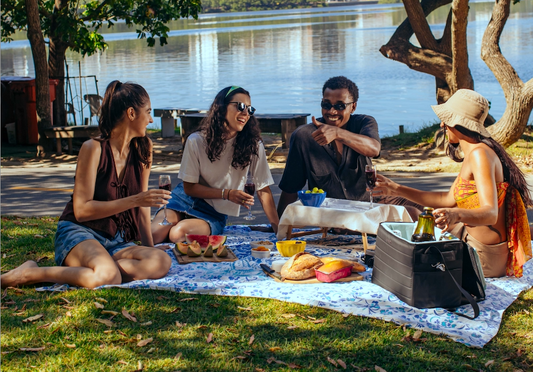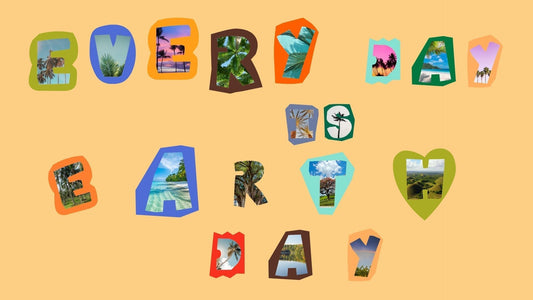I support any and all reasons to celebrate this beautiful planet that we call Earth. And I love that Earth Week reminds people and brands to slow down, think about the impact we’re all having on the planet, and make new commitments. But at Nutshell, that kind of thinking isn’t something we do just once a year—it’s how we’ve built the company from the start. Sustainability isn’t a trend for us. It’s in our materials, our packaging, the way we work with farmers—it's at the core of every decision we make. So to celebrate Earth Week, we're sharing 7 things we do every day to build a Nutshell brand that's kinder to the Earth. And maybe it’ll spark a few ideas for others too!
1. Use Natural Insulation Made From Upcycled Coconut Husk Fibers (Not Plastic Foam Insulation)
It all started with a dream: What if we could replace plastic foam with something natural and biodegradable? Everybody hates styrofoam and other plastic foams. Meanwhile, coconut husks are usually burned or tossed out after oil production—but they’re actually amazing insulators. So we found a way to turn them into premium insulation panels that keep things cold for days. The result? Less waste, less plastic, and a cooler that feels right at home out in nature, and that looks great too.
2. PFAS-Free DWR Finish (No toxic forever chemicals)
When we looked at performance fabrics, we kept seeing water-repellent coatings that rely on PFAS—chemicals that never break down and can be toxic to people and the environment. A lot of brands are beginning to phase them out slowly over the next decade, but many continue to use them despite evidence that they're harmful, and new regulations. At Nutshell, we knew we had to do better right away. Our C0 DWR finish is completely PFAS-free and still repels water, dirt, and stains so you can take your Nutshell on any outdoor adventure.

3. Minimize packaging
We’ve all opened a box and been hit with a mountain of plastic, foam, and filler that goes straight to the trash. That never sat right with us. So we kept it simple—recycled cardboard, no plastic, minimal packaging. All the information you need to know is printed directly on the cardboard box, no need for anything else. Shipping sustainably is part of the product experience. If we’re serious about reducing waste, that has to include how our products show up at your door. Less packaging means less mess, and a smaller footprint.

4. Using recycled materials over virgin plastics
Instead of using virgin plastics, we source textiles made from recycled plastic bottles and upcycle deadstock fabrics when we can. It costs more—but giving single-use plastic a second life is part of our mission to reimagine waste and build gear with a lighter footprint.
5. Sourcing from smallholder farmers
Instead of sourcing raw materials through large industrial suppliers, we work with smallholder coconut farmers and cooperatives in the Philippines who grow and harvest coconuts for their oil. We work with those farmers to put a price on something that was previously treated as waste. That means more income, more opportunity, and more resilience for rural communities. And because we manufacture close to the source, we’re able to keep jobs and value in the same regions where our materials are grown. Supporting the planet also means supporting the people who care for it.

6. Designing for End of Life, for a Circular Economy
Most products aren’t designed with their afterlife in mind. But we believe that if we’re going to put something into the world, we should know how it can eventually leave it—with as little harm as possible. That’s why we choose materials that are biodegradable or recyclable, and design products that are easy to disassemble. End-of-life thinking is complex because there are so many different systems at play, and we can't control them all. But it’s necessary to give it some thought and do what we can to stop contributing to a throwaway culture.

7. Partnering for innovation and impact
Building a brand is all about building partnerships, and we choose to partner with mission-aligned teams, brands and organizations who are asking the right questions, innovating new solutions, and sharing their learnings and vision so we can all build better together. From partnering with organizations like the Fibral Material Alliance to reinvesting part of our profits through 1% for the Planet, our impact gets bigger through these partnerships every day.
We’re proud of the steps we’ve taken so far, but we’re not done. Every product is a chance to ask: could this be lighter, cleaner, more local, less wasteful? We don’t have all the answers—but we keep asking the questions. Because sustainability isn’t about always finding the perfect solution—it’s about constantly improving and staying honest along the way. We’ll keep testing, learning, and sharing what works (and what doesn’t). And we hope more brands will join us in building better things, starting with better materials!



